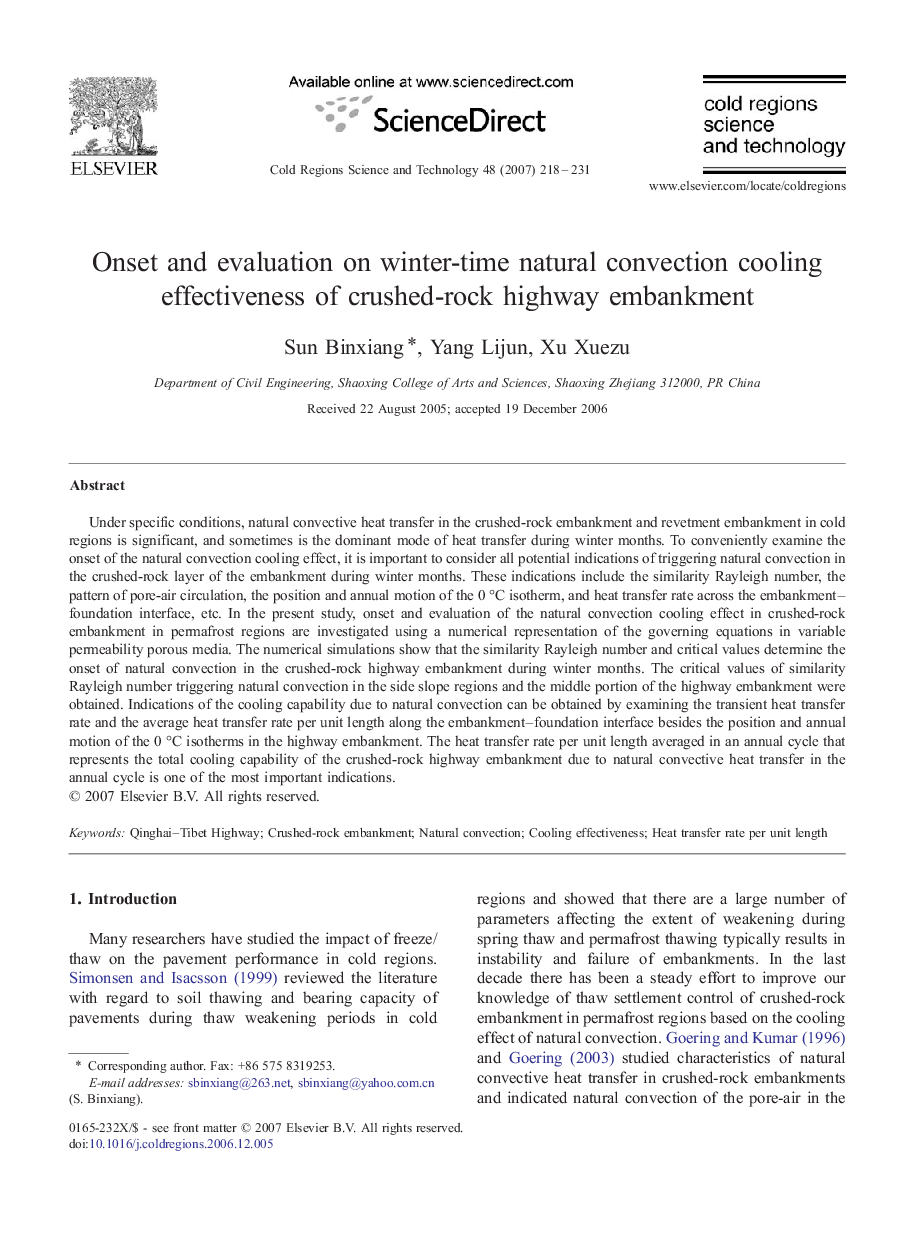| Article ID | Journal | Published Year | Pages | File Type |
|---|---|---|---|---|
| 4676856 | Cold Regions Science and Technology | 2007 | 14 Pages |
Under specific conditions, natural convective heat transfer in the crushed-rock embankment and revetment embankment in cold regions is significant, and sometimes is the dominant mode of heat transfer during winter months. To conveniently examine the onset of the natural convection cooling effect, it is important to consider all potential indications of triggering natural convection in the crushed-rock layer of the embankment during winter months. These indications include the similarity Rayleigh number, the pattern of pore-air circulation, the position and annual motion of the 0 °C isotherm, and heat transfer rate across the embankment–foundation interface, etc. In the present study, onset and evaluation of the natural convection cooling effect in crushed-rock embankment in permafrost regions are investigated using a numerical representation of the governing equations in variable permeability porous media. The numerical simulations show that the similarity Rayleigh number and critical values determine the onset of natural convection in the crushed-rock highway embankment during winter months. The critical values of similarity Rayleigh number triggering natural convection in the side slope regions and the middle portion of the highway embankment were obtained. Indications of the cooling capability due to natural convection can be obtained by examining the transient heat transfer rate and the average heat transfer rate per unit length along the embankment–foundation interface besides the position and annual motion of the 0 °C isotherms in the highway embankment. The heat transfer rate per unit length averaged in an annual cycle that represents the total cooling capability of the crushed-rock highway embankment due to natural convective heat transfer in the annual cycle is one of the most important indications.
